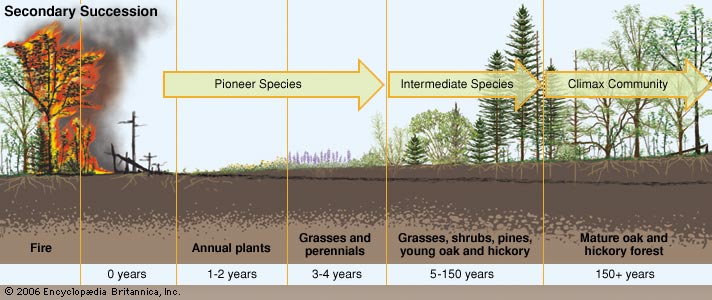How can ecological succession change a population?
1 Answer
Ecological succession , or the process in which the structure of a community evolves over time, means that the species composition, density, and distribution of that community is constantly changing as time progresses. A community may eventually reach its climax, the point where the composition remains mostly stable unless some sort of disturbance occurs. Otherwise, communities are constantly changing.
In the example below, a fire destroys the existing species. With a year or two, what are called pioneer species arrive. These may be grasses, low flowering plants, herbs, mosses, and others. Then the populations of these pioneer species, which was once high during the first years since the fire, decreases as other species also move to the area.

As time passes, the pine trees dominate and create a lot of shade. Next, we see shade-loving trees such as ash, poplar, hickory, oak, and other species that are well-adapted to thriving in lower light conditions changing the community again. There will likely still be some pines for a period of time as the transition occurs, but again the species within the community changes, the population numbers of each of those species changes, and the distribution also changes
.

